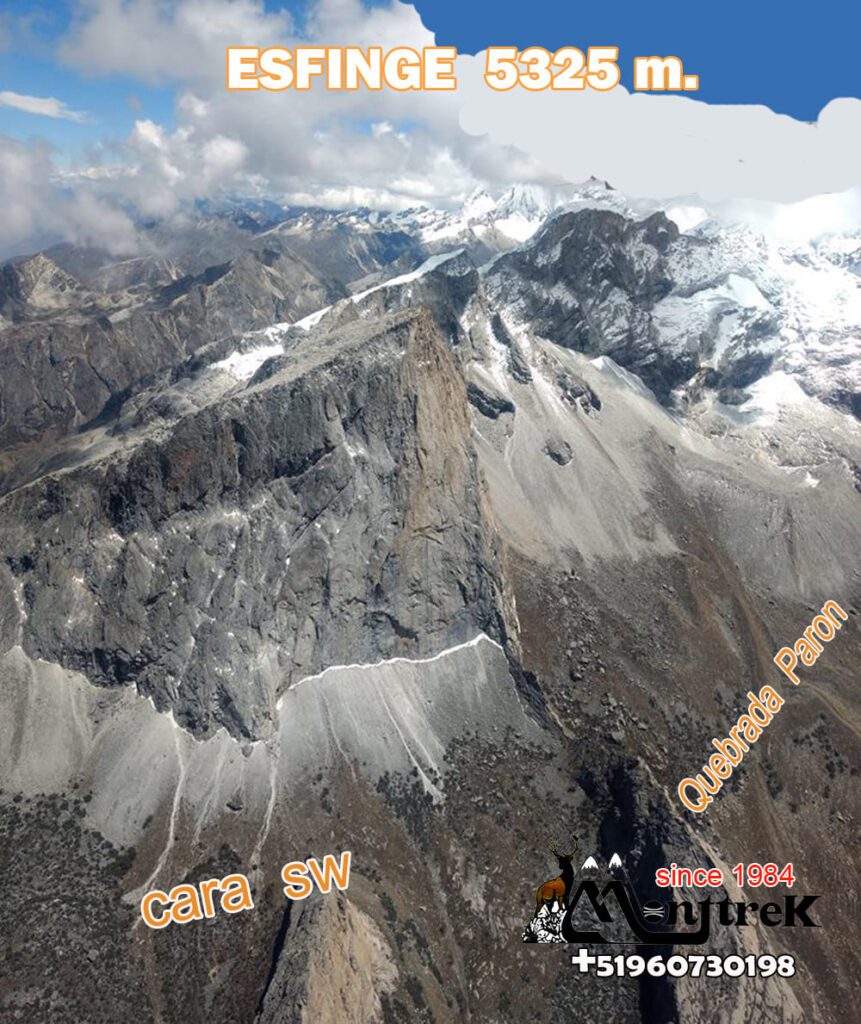THE HIDDEN SIDE OF THE SPHINX OR PARON HILL
THERE IS STILL NO OPENING ROUTE ON ITS SW SIDE
The Esfinge is a classic of the Cordillera Blanca, the elegant vertical granite wall on its east face seduces any long route climber (big wall). The combination of height with technical difficulty, with more than 700 meters of rock climbing, makes it a unique objective in Peru.
The Sphinx is the great wall par excellence of the Peruvian Andes, it represents ballet and artistic climbing. The first route was opened on July 8, 1985, by the Spanish mountaineer Antonio Gómez Bojorquez, better known as "Sevi"; VI, VI +, A1, 650-700 meters. It is the route with the highest number of repetitions, with more than 700 meters of traditional and sport climbing on granite at a height of 5,325 meters above sea level, with a wide spectrum of technical difficulties; located in the Parón ravine.
The Sphinx is also known as Cerro Parón, La Torre Aguja, El Cerro Colca or La Roca. This last name is possibly because it is a giant, dry granite mountain, which contrasts radically with its snowy neighbors; Putaca, Aguja, Caraz, Artesonraju, Paria (Parón), Pirámide, Chacraraju, Pisco and the Huandoys; They are all found in the Quebrada (valley) Parón northern area of the Cordillera Blanca; which is easily accessible via the existing road.
The first route was opened on the east face with conventional and homemade material, 20 lengths of rope were needed, in 10 days and 9 consecutive bivouacs, with almost 20% of artificial climbing due to the existing vegetation in the fissures.

– Author: Porfirio Cacha –